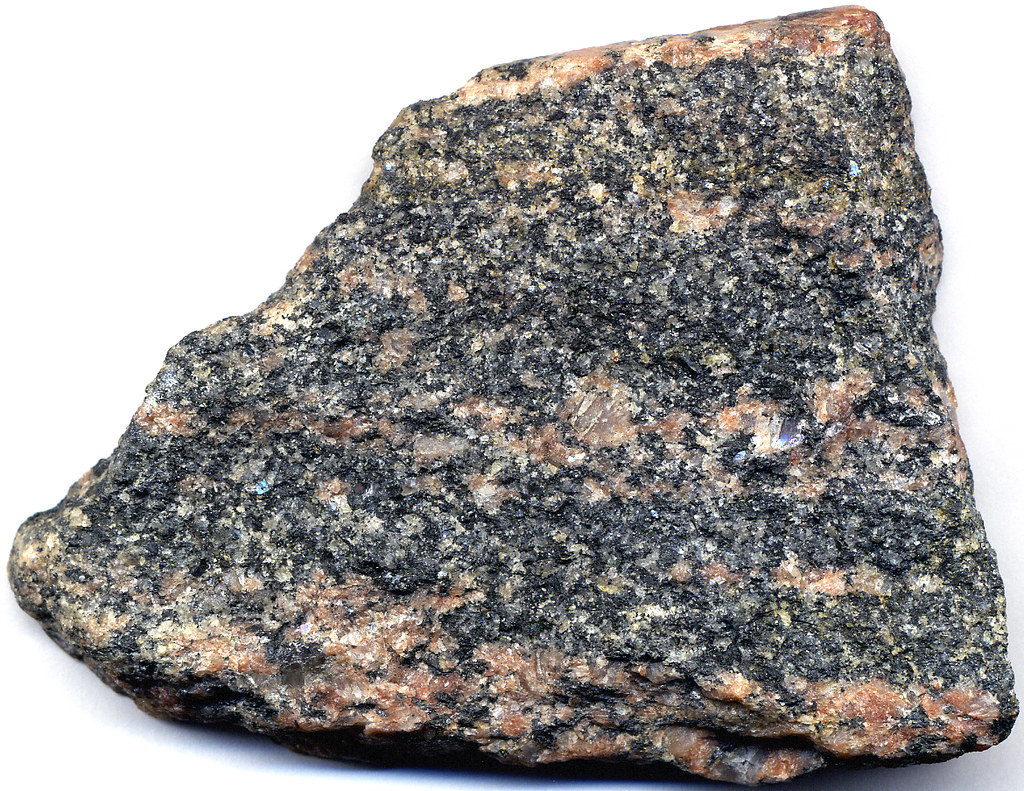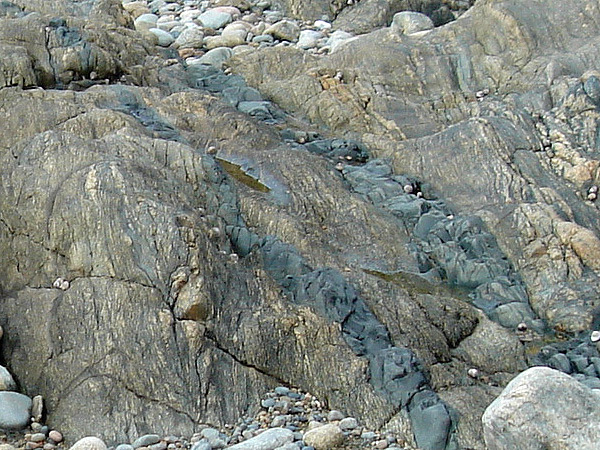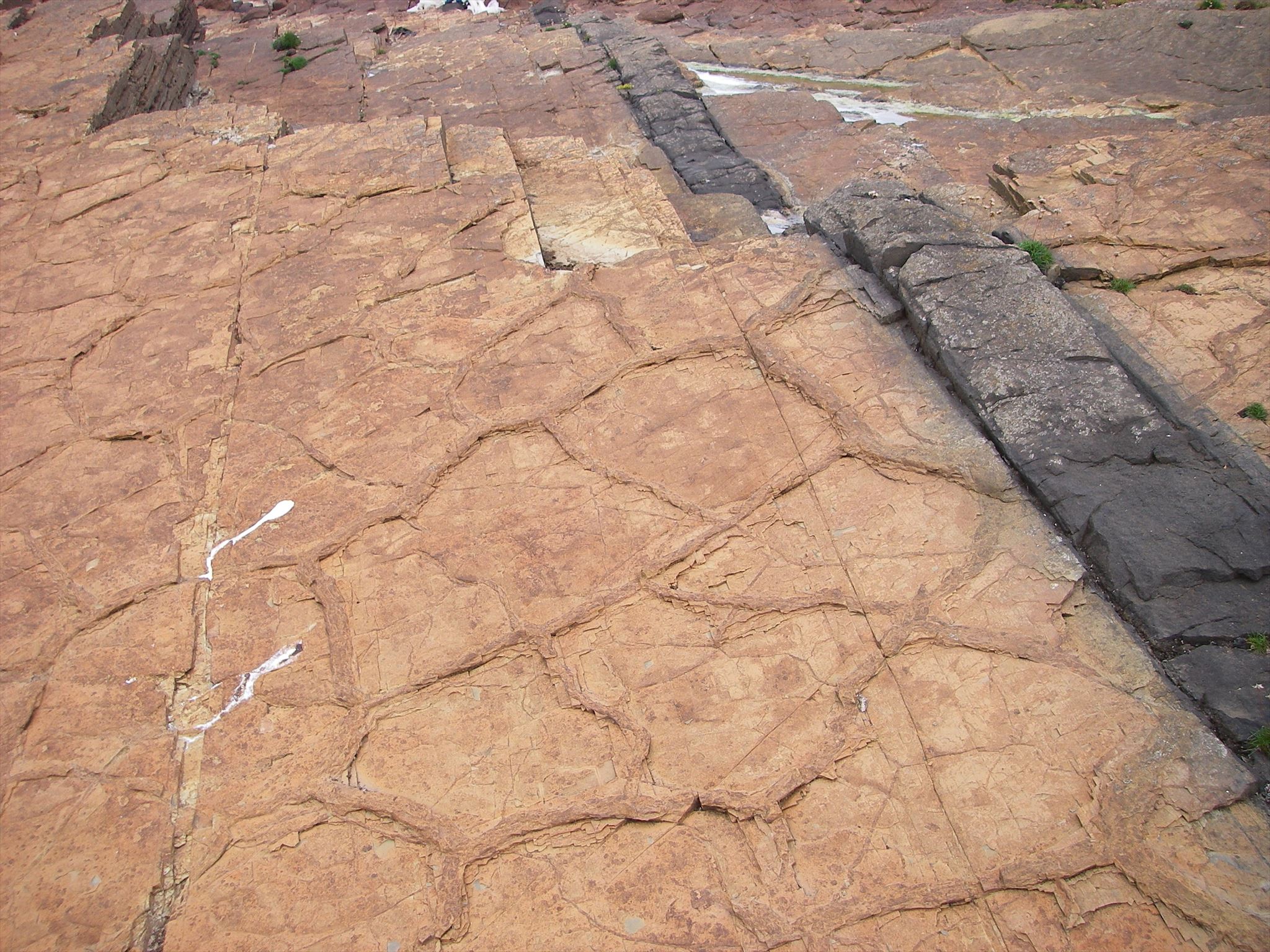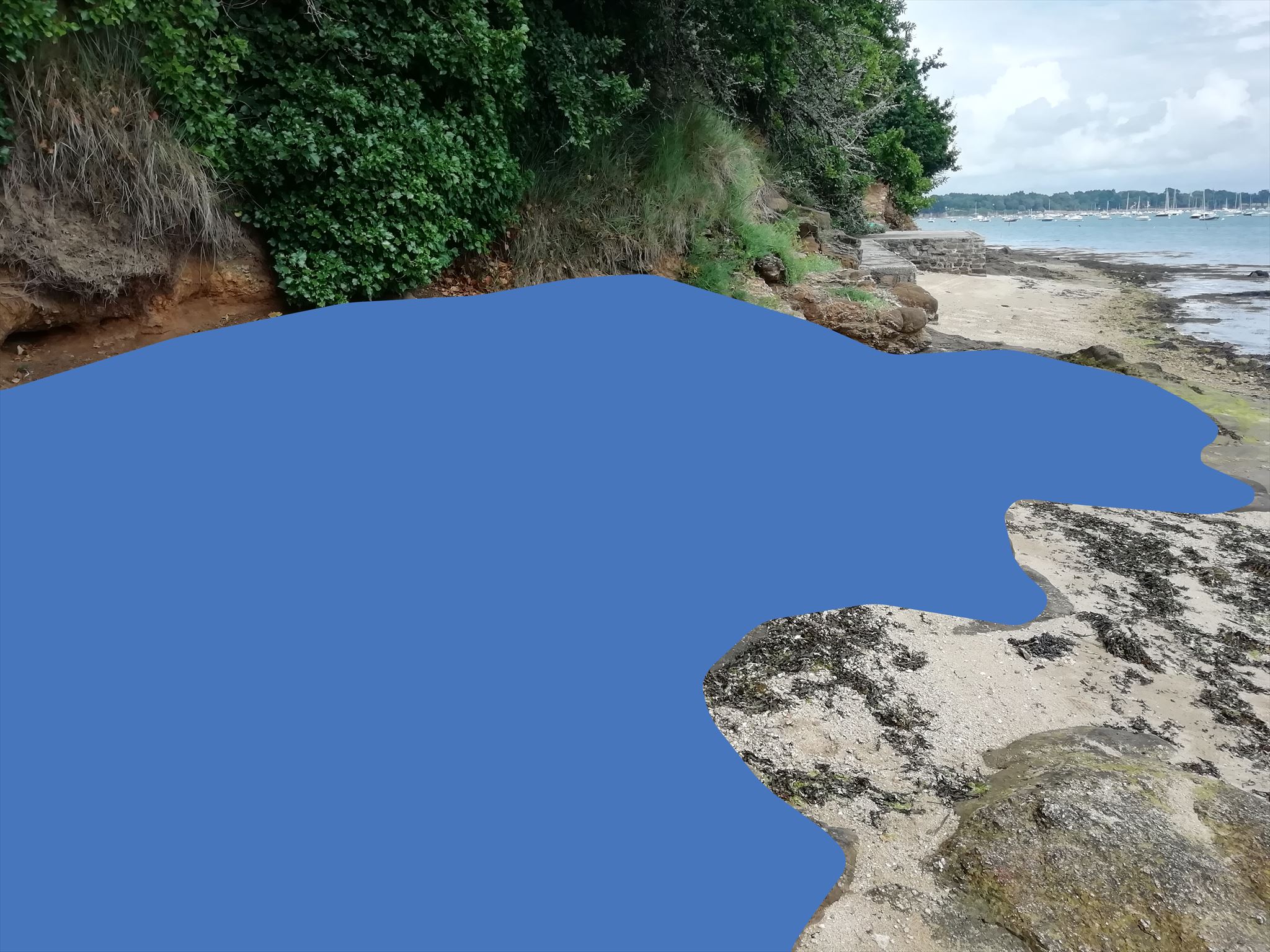
Des filons à Arradon

Contexte local
Sur la pointe d'Arradon, on peut observer de nombreux filons de taille centimétrique à décimétrique dans la roche. Ces roches résultent de la fusion partielle de roches préexistantes qui se traduit par l’apparition de veines disposées en bandes parallèles. Les filons se sont formées dans les profondeurs de la chaîne hercynienne il y a plus de 300 millions d'années.
Rappels géologiques


-
Filon : Un filon est une lame de roche, épaisse de quelques centimètres à quelques mètres, recoupant un encaissant et correspondant le plus souvent au remplissage d'une fracture (faille, diaclase).


Questions
Rappel concernant les Earthcaches :
Il n'y a pas de conteneur à rechercher ni de logbook à signer. Après avoir été sur les lieux pour chercher les réponses aux questions, loguez cette cache "Found it" et envoyez-moi vos propositions de réponses, en précisant le code GC de la cache, soit via mon profil, soit via la messagerie geocaching.com (Message Center), et je vous contacterai en cas de problème.
Attention, l'earthcache n'est pas forcément accessible à marée haute ! Pensez à consulter les horaires de marées avant de venir sur place.
Questions :
1- Quand se sont formés les filons que vous pouvez observer ?
2- Décrivez et nommez-moi les deux types de roches que vous pouvez observer dans la zone bleue.
3- D'après vous quelle roche est le filon et quelle roche est l'encaissant ? Qu'en concluez-vous ?


Veins at Arradon

Local context
On the point of Arradon one can observe many veins of centimeter to decimetric size in the rock. These rocks result from the partial fusion of pre-existing rocks which results in the appearance of veins arranged in parallel bands. The veins formed in the depths of the Hercynian Range more than 300 million years ago.
Geologicals reminders



Questions
Reminder concerning the Earthcaches :
There is no container to look for or a logbook to sign. After having been on the spot to look for the answers to the questions, log this cache "Found it" and send me your answers, specifying the GC code of the cache, either via my profile or via messaging geocaching.com (Message Center), and I will contact you if there is a problem.
Please note that the earthcache is not necessarily accessible at high tide! Be sure to check the tide tables before you arrive.
Questions :
1- When were the veins that you can observe formed?
2- Describe and name the two types of rocks that you can observe in the blue zone.
3- According to you which rock is the vein and which rock is the host? What do you conclude from this?
